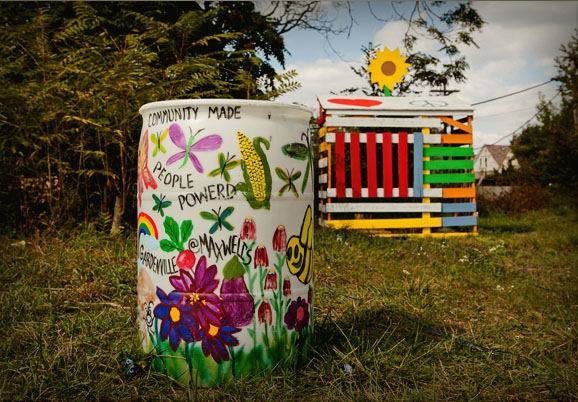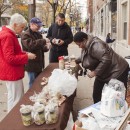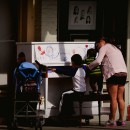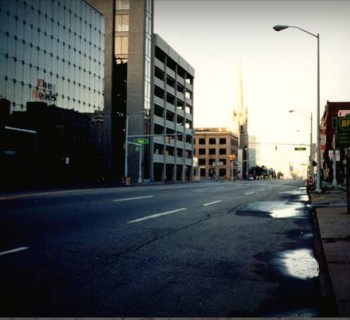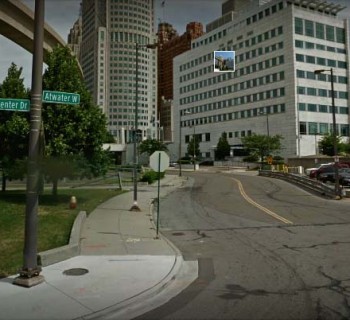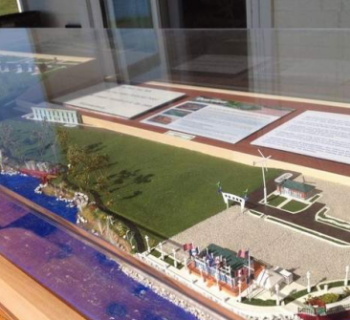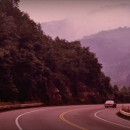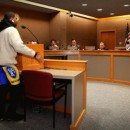DETROIT—When I think about reforestation, I think of massive projects in remote reaches of North America, like Alberta, Canada. Not always the case. In fact, reforestation efforts are happening right here in the City of Detroit. And a good example can be found at The Lot, which is indeed, a vacant lot on the north side of Michigan Avenue, between Junction Street and Livernois Avenue.
There, you’ll find a few dozen new plantings of trees and shrubs, including twig-sized saplings, pear, plum and apple trees, and strawberries.
There are raised beds that grow beans, peppers, tomatoes and herbs; rings of flowers and plants scattered about the property; a tiered flower planter made with painted tires; a rain barrel; and a colorfully painted shed.
It’s come a long way from what it once was: a garbage-filled lot – syringes, diapers, boards with rusty nails, tires, broken glass, carpets, old couches – overgrown with weeds.
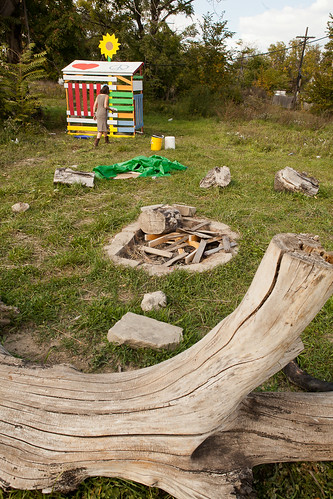 Caroline Addis started the project last April. But the idea was brewing earlier, as she and some friends started a nonprofit last year, Detroit Reforesters.
Caroline Addis started the project last April. But the idea was brewing earlier, as she and some friends started a nonprofit last year, Detroit Reforesters.
The group was looking for a place to plant small patches of native forest. Through her work at 5900 Michigan Avenue Activist Center, she noticed a lot next door that had become the neighborhood dumping grounds.
She initiated a discussion group for an Operation Cleanup Crap event, and a group of Occupy Detroit comrades showed up to clear the lot. The landowner rented a giant dumpster for the occasion, and thus The Lot began its transformation.
Next up, the Detroit Reforesters planted donated trees and plants. Private donations and fundraising events help fund the project, but it operates with little funding.
“That forces creative thinking and re-purposing junk objects found already on The Lot,” says Addis.
The group found 20 tires, and those that were salvageable were painted by Addis, her son and a friend.
The paint store down the street discounted the paint when Addis mentioned how they were using it. Another friend built the shed with recycled wood and palettes.
The reusing and recycling kept going.
“The large logs that were too large to burn in the fire pit were turned into seating around it,” says Addis. “Bricks from piles of debris that were unearthed while digging for the gardens were used to encircle the beds.”
While it looks like even the smallest of saplings survived the summer, the heat and drought were tough obstacles at The Lot. The far corner, where most of the reforested trees are located, was brutal to keep alive.
“We had to literally carry a five-gallon bucket of water per tree from the building all the way across that mammoth lot,” she says.
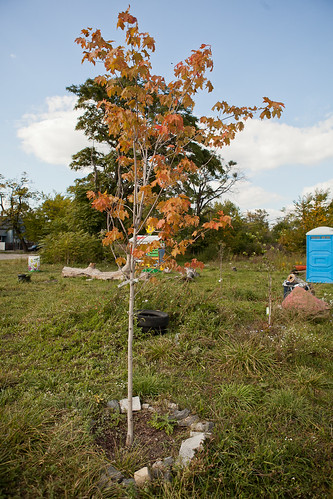 With much motivation, dedication and love for the project, Addis and her small band of volunteers have both small picture and large picture purposes in mind.
With much motivation, dedication and love for the project, Addis and her small band of volunteers have both small picture and large picture purposes in mind.
As a scientist in graduate school for ecology, Addis can quickly cite the benefits of planting diverse tree species: increase air quality by removing pollutants and producing oxygen; remove carbon from the atmosphere; reverse the urban, heat-island effect; promote native wildlife and biodiversity; and reconnect humans with nature.
On a more human level? “I just want to give the folks around there a clean and safe place to enjoy, grow some healthy food to share, and experiment with some different permaculture techniques.”
Addis has seen neighbors reacting positively to the changes. Children like to run and play at The Lot and help dig or water the plants.
“Now I'll often go over there and see neighbors sitting on the logs talking, kids playing – I even saw a kid having a game of catch with his dad,” Addis says.
With the dangerous items that were dumped now removed, and the overgrowth under control, The Lot is a place that neighbors can use and enjoy, improving the quality of life in southwest Detroit.
Next season, Addis wants to increase fruit and vegetable production to share more bounty. “I do often see people walking by and picking tomatoes and some herbs, and a few honeyrock melons,” says Addis. “That always makes me happy.”
The needs are many at The Lot:
- volunteers
- donation of more fruit trees, blueberry bushes other fruit-bearing shrubs
- bilingual, educational signage about ecology and the environment
- money to erect a greenhouse to extend the growing season
Find volunteer days and general green info on The Lot’s Facebook page.


